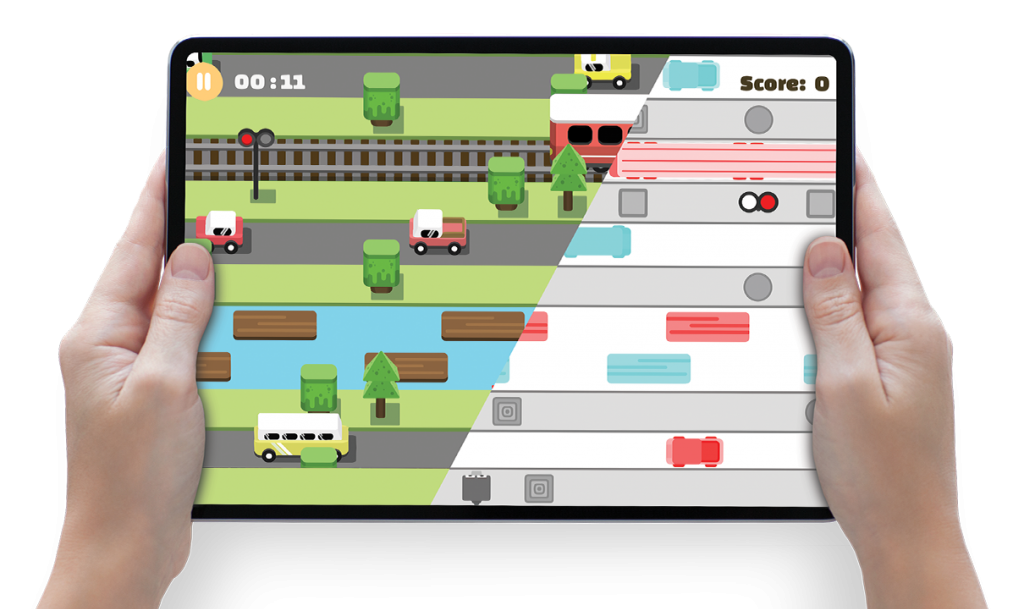Strabismus

Each eye has 6 external muscles (known as the extraocular muscles) which control the movement and position of the two eyes. To maintain clear and single vision, the muscles and the nerves controlling these muscles must work together.
Strabismus, also known as a turned eye or squint, is a condition where the two eyes do not align properly when looking at a target. It affects 2-4% of all children in Australia and can be classified by whether the eye turns inwards (esotropia), outwards (exotropia), upwards(hypertropia) or downwards (hypotropia).1 They can also be classified by whether the eye turn occurs all the time (constant) or some of the time(intermittent) and whether it affects one eye (unilateral) or both eyes(alternating/bilateral).1

Strabismus can affect many aspects of life including education, hand-eye coordination, social development and other general activities in daily life making early intervention crucial.2,3 For example, young children may develop an avoidance to reading which could cause poor academic performance.4
Causes
Strabismus is uncommon in the first 3-6months of life and usually relates to how a child’s eye muscles are controlled by the brain. Turned eyes usually present between the ages of 1 to 4. The common causes of strabismus in children include:
- Uncorrected refractive error or eye prescription (particularly high long-sightedness) causing the muscles that focus and direct the eyes to overexert themselves
- Excessive nerve stimulation of the muscles controlling eye movements
- Other less common causes including certain medical conditions or muscular issues
Furthermore, it is important to consider a child’s genetics as a family history of strabismus can increase the risk of developing the condition.5
In adults, the main causes of strabismus include thyroid problems and various types of cardiovascular disease. As most types of strabismus in adults are acquired, proper management often includes ruling out these possible causes.
Symptoms
Symptoms of strabismus can be variable and can be dependent on age. They can include:
- Double vision
- Squinting
- Excessive head tilt or abnormal head position
- Crossed or turned eyes (although this may be very difficult to identify)
- Poor depth perception
Importantly, some children may not even be aware they are experiencing these symptoms, and so may not inform their parents. If untreated, a child may suppress one eye – this occurs when the brain selectively ‘turns off’ visual signals it receives from the turned eye to minimise confusion and avoid double vision. Although this might seem beneficial, suppression of the turned eye leads to amblyopia, or 'lazy eye’, where the suppressed eye does not properly develop. Early identification and treatment of strabismus is therefore vital to prevent amblyopia in children.6
Management
The goal when treating strabismus is to improve eye alignment, allowing the eyes to work together more effectively. Often this will boost vision in one or both eyes, improve a patient’s binocular vision, eliminate the possibility of amblyopia and favourably alter the cosmetic appearance of the eyes. There are many treatment options for strabismus, and they often depend on the type and cause of strabismus.
Spectacles and contact lenses are used to treat any refractive error or eye prescription, which let the eye muscles relax and straighten. Vision training (e.g. Vivid Vision) can also strengthen the eye muscles preventing an eye turn.7 If all other treatment options are unsuccessful, patients may require strabismus surgery which aims to surgically straighten the eyes.
On-going follow up are required to monitor how the eyes are working together. If treated early, children can prevent amblyopia and loss of depth perception.
References
1) O’Dowd C. Evaluating squints in children. Aust Fam Physician. 2013 Dec;42(12):3.
2) Jones RK, Lee DN. Why two eyes are better than one: the two views of binocular vision. J Exp Psychol Hum Percept Perform.1981 Feb;7(1):30–40.
3) Sheedy JE, Bailey IL, Buri M, Bass E.Binocular vs. monocular task performance. Am J Optom Physiol Opt. 1986Oct;63(10):839–46.
4) Kelly KR, Jost RM, De La Cruz A, Birch EE.Multiple-Choice Answer Form Completion Time in Children With Amblyopia and Strabismus. JAMA Ophthalmol. 2018 Aug;136(8):938–41.
5) Michaelides M, Moore AT. The genetics ofstrabismus. J Med Genet. 2004 Sep 1;41(9):641–6.
6) Robaei D, Rose KA, Kifley A, Cosstick M, IpJM, Mitchell P. Factors associated with childhood strabismus: findings from a population-based study. Ophthalmology. 2006 Jul;113(7):1146–53.
7) Brown R, Blanchfield P, Fakis A, McGraw P,Foss AJE, And on behalf of the I-BiT Study Group. Clinical investigation plan for the use of interactive binocular treatment (I-BiT) for the management of anisometropia, strabismic and mixed amblyopia in children aged 3.5–12 years: a randomised controlled trial. Trials. 2019 Jul 16;20(1):437.
FAQs
Please browse through some of our most frequently asked questions on this topic.
Speak to our friendly team today
Book your appointment now for personalised eye care tailored just for you.











